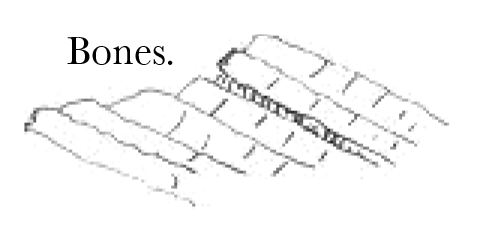From W. B. Dawkins 31 July 1869
Norman Road, Rusholme, Manchester.
31 July 1869.
Dear Mr. Darwin,
I returned from Rhagatt yesterday, after having had a most pleasant day at Cave-digging.1
Mrs Lloyd2 entertained me en Prince, and on Friday organised a party to explore the cave and placed several workmen at my disposal. On reaching the place after a drive of 14 miles, I found that all the bones you sent me were discovered in a space between two limestone beds, where the intervening softer material had been carried away by water. Its maximum heighth was about 4 to 6 inches and its width 20 feet or more, and it extended parallel to the bedding of the rock

The bones had manifestly been conveyed in by water, and belonged to the Prehistoric epoch (which I have defined in a paper now in the press, that will be sent to you shortly).3 They were washed out of an old refuse-heap, which has now utterly disappeared.
At a little distance and much lower down in the rock there is a cave, full of red cave-earth, a kind of modern red silt, that I have found invariably to be barren of any prehistoric or postglacial remains. We dug into it and then forsook it for a spot that seemed to me to be likely to contain bones. Here we met with a curious jumble of human bones, and remains of horse, goat, hare, rabbit, badger, enormous birds, wolf, wild cat, fox and Celtic Shorthorn. In the small area excavated there were the remains of at least 5 corpses varying by age from infancy to the decline of life. All the adult teeth were ground smooth like the so called Ancient British teeth. The place that contained them was a small rock-shelter, gradually passing into a hole, which may perhaps be the entrance into a cave. We dug 6 feet into it, and Mrs Lloyd intends to carry the exploration on for her own satisfaction.4 The example set by M. Lartet in the Aurignac cave, prevents my hazarding a guess at the age of the human bones, or at the cause by which they were introduced.5 Most of the long-bones were perfect; the few that were imperfect were broken by the fall of stones from the roof. The perfection of the vertebræ implies also that neither dogs, nor wolves had gained access to the corpses to which they belong, since both those animals invariably eat the centra and most of the neural arches. There were
Footnotes
Bibliography
Dawkins, William Boyd. 1869. The Denbighshire caves. Transactions of the Manchester Geological Society 9 (1869–70): 31–7.
Lartet, Edouard. 1862. New researches concerning the co-existence of man with the great fossil mammals, regarded as characteristic of the latest geological period. Natural History Review n.s. 2: 53–71.
Lucas, Peter. 2007. Charles Darwin, ‘little Dawkins’ and the platycnemic Yale men: introducing a bioarchaeological tale of the descent of man. Archives of Natural History 34: 318–45.
Summary
Reports on prehistoric finds from caves at Rhagatt.
Letter details
- Letter no.
- DCP-LETT-6847F
- From
- William Boyd Dawkins
- To
- Charles Robert Darwin
- Source of text
- The Huntington Library (CB 847)
- Physical description
- AL inc
Please cite as
Darwin Correspondence Project, “Letter no. 6847F,” accessed on 27 July 2024, https://www.darwinproject.ac.uk/letter/?docId=letters/DCP-LETT-6847F.xml
Also published in The Correspondence of Charles Darwin, vol. 18 (Supplement)


